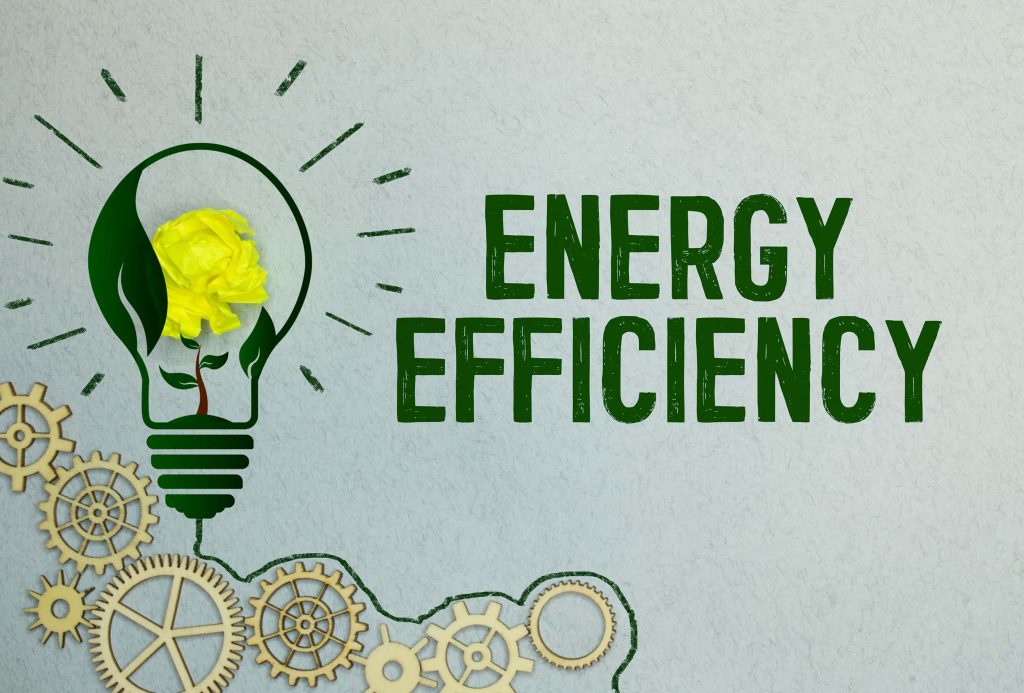In a period when saving on your energy bills has become essential, there are many aspects to consider.
To get around the massive price hikes in domestic energy bills, it is a good idea to make sure your home has a good level of energy efficiency.
There are different ways to improve this aspect of a home, starting with the heating system and insulation of the building, or more frequently, just by behaving differently.
This article will give you three guidelines, in investment terms, to achieve home energy savings, and therefore improve energy efficiency.

What is energy efficiency?
The definition of energy efficiency is the ability of a physical system to offer a higher yield, using less energy, succeeding in optimising results using fewer resources.
Translating this concept to a house, this means that a house has a certain energy requirement to meet the necessary level of comfort.
The fewer resources used, the greater therefore, the energy efficiency of the home.
In terms of figures, energy efficiency is a value ranging from 0 to 1, or with a percentage from 1 to 100, where a lower value means that the system is wasting resources, while a higher one means greater energy efficiency, as the energy emitted is translated into a result.
Pursuing energy efficiency for your home means bringing into play operations that can achieve improved energy use in the home.
Domestic energy efficiency is defined in a specific document, the APE, an energy efficiency certificate issued by the ENEA. This document identifies the obligations to comply with in order to achieve set efficiency parameters, which give the right to a series of advantages that the Italian government has granted for this purpose, such as the Ecobonus.
An energy-saving home therefore cuts costs for families and improves environmental impact through the prevention of wasted resources.
First of all, greater energy efficiency means using energy better, thanks to technological devices and individual behaviour that makes this happen.

Investment 1: an efficient heating system
Thermal efficiency is one of the main factors that contribute to a home’s energy efficiency and to achieve it takes a high-performance heating system.
A smart heating system such as IRSAP NOW can bring about notable improvements to your home’s energy efficiency.
This is a heating system that can be used on any type of central heating, whether a standard gas-fired boiler, a condensing boiler, or a heat pump.
The smart system serves to manage heating in zones, optimising consumption according to use in a specific environment.
IRSAP NOW’s smart thermovalves make it possible to program a different temperature in every room of the home, as well as controlling the regular flow of water to the radiators where they are fitted.
Maximum comfort and lower consumption: energy is only consumed when needed, with no waste.
The valves are all connected via a connection unit to an IRSAP NOW smart thermostat which, as well as regulating the temperature in the different rooms or switches the heating system on or off automatically, even according to the time of day.
It is a truly smart thermostat, able to learn the habits of the user and to reproduce them automatically, which translates as guaranteed savings.
With the IRSAP NOW app the system is always connected to your smartphone and using geolocation, it is able to see when no one is home and stop the system from working on empty.

Investment 2: an efficient insulation system
This is an investment that may be significant at the outside, but in the long term, it has notable benefits and savings.
Home insulation means correctly insulating against the outside from a thermal point of view, so as to avoid significant heat exchanges with cold air entering the house from outside or vice versa, with heat from the home being lost to the outside.
To optimise insulation, it is necessary to carry out interventions that correctly insulate roofs, floors and walls, with specific attention to windows and doors, where draughts can be harmful in terms of energy use.
Roofs and windows are usually insulated with a specific jacketing, created from insulation panels that are inserted in the masonry.
Thermal insulation is boosted by the use of specific materials, such as wood, wood fibres, and cellulose, but also wool or fibreglass, especially for roofs and floors.
It is extremely important to deal with doors and windows, where unwanted thermal bridges are often created with the outside.
A good solution is to install double glazing on all windows, and to use aluminium or PVC for frames, since these guarantee excellent insulation.
Or, even simpler, placing draught excluders under the doors.
These are efficiency-boosting interventions that in the long term can save a great deal of energy in the home and therefore, increase its energy efficiency.

Investment 3: more responsible behaviour
Before structural and technological interventions, better energy efficiency can also be achieved using more responsible behaviour.
These are really simple to do and often, we don’t follow them because we are distracted.
First of all, it is a good idea not to waste resources by using household appliances badly; make sure they are switched off when they are not needed.
I we think about it, even our use of hot water, which keeps the heating system working, is often much higher than necessary, while we shower or even just clean our teeth.
We need to consider our simple lack of attention, such as when we leave a window open or forget to switch off the heating at night, or when we leave things in the front of the radiators, stopping them from working at their best.

There is more than one way to achieve energy efficiency
We have seen how there are many different ways to improve energy efficiency in the home.
It all begins with being aware, with having a real wish to prevent waste and therefore, to achieve a genuine energy saving.
It starts with good behaviour, but it can certainly be helped by technology
For heating, for example, a system such as IRSAP NOW can offer significant benefits, even in the shortest amount of time.









































